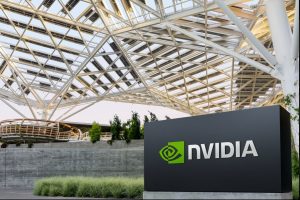SANTA CLARA — NVIDIA has introduced a game-changing tool for researchers worldwide—cuPyNumeric, an accelerated computing library designed to enhance data-crunching capabilities without requiring users to alter their existing Python code. This breakthrough in computing technology helps scientists tackle massive data sets, from quantum-level electron behaviors to galactic collisions, by allowing them to efficiently scale their workloads across everything from personal laptops to large-scale supercomputers.
Incorporating cuPyNumeric into their workflows, researchers no longer need specialized knowledge in computer science to harness the power of high-performance computing. This revolutionary tool integrates seamlessly with the popular NumPy interface, providing an easy way for scientists to move from CPU-only environments to GPU-accelerated systems—without having to rewrite their code. By applying cuPyNumeric, users can now execute their Python code on thousands of GPUs, effortlessly scaling their tasks from a single machine to an entire cluster of supercomputers.
The latest update to cuPyNumeric, now available on Conda and GitHub, introduces support for the NVIDIA GH200 Grace Hopper Superchip, automatic runtime resource configuration, and enhanced memory scaling, as well as support for HDF5, an essential format for managing complex data in scientific research. This expanded functionality is already transforming the workflows of leading research institutions such as SLAC National Accelerator Laboratory, Los Alamos National Laboratory, and UMass Boston, among others.
For instance, researchers at SLAC National Accelerator Laboratory have reported a sixfold increase in the speed of X-ray experiments, enabling them to conduct parallel analyses and optimize their use of valuable experiment hours. Such advancements allow for faster discoveries and more efficient sharing of results in materials science and other critical fields.
cuPyNumeric’s ability to scale from a single GPU to an entire supercomputer opens up vast new possibilities for researchers tackling big data problems. By making it easier to run computationally intensive simulations, cuPyNumeric allows scientists to explore previously unreachable data sets. In climate science, for example, the Australian National University has leveraged cuPyNumeric to scale complex algorithms for large-scale weather modeling, while Los Alamos National Laboratory is using the tool to accelerate machine learning algorithms on its new supercomputer, Venado.
Notably, the National Payments Corporation of India (NPCI) has used cuPyNumeric to speed up transaction processing on its real-time digital payment system. By accelerating matrix calculations, NPCI improved the processing speed by 50 times, enabling real-time transaction tracking and better detection of fraudulent activities.
With its ability to seamlessly integrate into existing workflows, cuPyNumeric is poised to become a critical tool in scientific discovery, empowering researchers to accelerate their data analysis while improving their productivity across fields ranging from astronomy to economics.
For further demonstrations, visit NVIDIA’s booth at Supercomputing 2024 in Atlanta, where cuPyNumeric will be showcased in action.
Watch the NVIDIA special address at SC24.



















